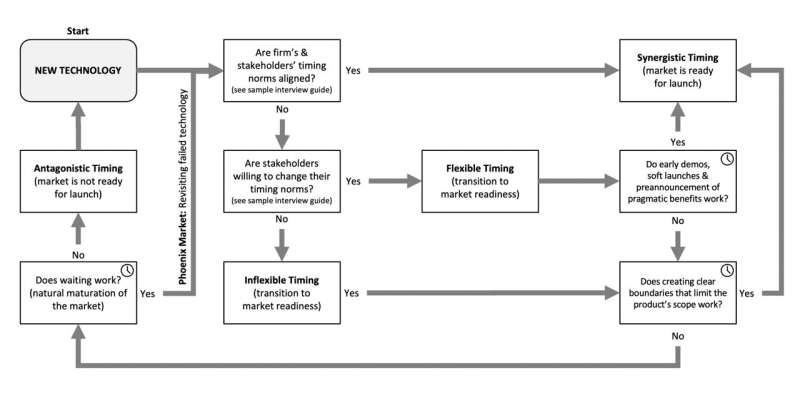This article has been reviewed according to Science X's editorial process and policies. Editors have highlighted the following attributes while ensuring the content's credibility:
fact-checked
peer-reviewed publication
proofread
When is the right time to launch new technologies?

New research from Bayes Business School (formerly Cass) finds that being on the cutting edge of technology is not enough to ensure success in the market, and managers must strategically time launches to create a source of opportunity and credibility for the firm.
The study, led by Dr. Thomas Robinson, Senior Lecturer in Marketing at Bayes, with Dr. Ela Veresiu, Associate Professor of Marketing at Schulich School of Business, York University, Toronto, develops a framework for guiding organizations on the best situations for a product launch.
The study is published in the Journal of Marketing.
The research identifies four timing situations that can confront marketing managers. Knowing the features and traits of each timing category allows firms to develop a launch strategy leading to success:
- Synergistic timing is the optimal, legitimate launch condition whereby a firm and its stakeholders share norms about when things should occur. Here the market is ready for a product and stakeholders are ready to embrace change.
- Flexible timing consists of low firm-led coordination but high stakeholder willingness to change. Consumers and other stakeholders initiate the legitimacy of a launch moment by being open to a product's prospective utility. Flexible timing can become synergistic timing if a firm decides its product is sufficient for early release, or it can buy time with consumers by sharing prototype failures or "drip-feeding" information about a product.
- Inflexible timing occurs when there is little appetite from stakeholders to change their timing expectations, so the firm must induce appetite for new technology that can overcome stakeholder caution about the future. To move from inflexible to synergistic timing, managers should aim to restrict a product's tech functionality or increase its dependency on human intervention.
- Antagonistic timing arises when both stakeholder willingness to change and firm-led coordination are low, and launching new technology should not be a priority in this instance.
The conceptual paper draws on the 2013 release of the Google Glass augmented reality (AR) experience, which failed because it launched at the wrong moment. The firm itself was not adequately prepared, nor were consumers ready to accept the functionality of the device, leading to the glasshole moniker. A decade later, consumers are ready for public filming and social media sharing. Legislation is also in place in a way that now makes Ray-Ban's Meta Smart Glasses a very desirable device.
Launching new technology in the market is therefore—according to the research—a social game, in which timing is an issue of poise and tact when engaging with stakeholders. Offering time signals consideration, respect, and mindfulness. Not offering enough time is rude and gets in the way of understanding and feeling comfortable around the new technology.
The research was supported by a comprehensive review of literature looking into the role of time in market legitimacy, using the Business Source Complete database to extract academic articles around the subject. The resulting sample of 172 articles was then coded to identify key and recurring themes around time.
Dr. Robinson said insights on the role of timing are essential for firms to improve the odds of success at launch.
"While 30,000 new products are introduced every year, 95 percent fail," he said. "Consider a marriage proposal on the first date, a request for more time after ten years in a relationship, waiting too long to thank a relative for a birthday present or serving a dessert before the mains at a dinner party. Stakeholders have strong timing-norms about pacing, sequencing, coordination and planning that impact the readiness of the market.
"While marketers often have a linear view of technology, our research on timing reveals that it is not always the case that the old is simply replaced by the new—often old, failed technologies have a comeback. Product categories like AR glasses rose from their own ashes in 'phoenix markets,' suggesting that it can be worthwhile to revisit old failures. Smartwatches, electric cars, and social media were all initial failures that later succeeded. Substantial losses could have been avoided had they had better timing frameworks.
"While the timing framework is developed for launching new technologies, our research also has broader applications for rebranding and mergers, political marketing, understanding the fashion cycle, service design and the experience economy."
More information: Thomas Derek Robinson et al, EXPRESS: Timing Legitimacy: Identifying the Optimal Moment to Launch Technology in the Market, Journal of Marketing (2024). DOI: 10.1177/00222429241280405




















